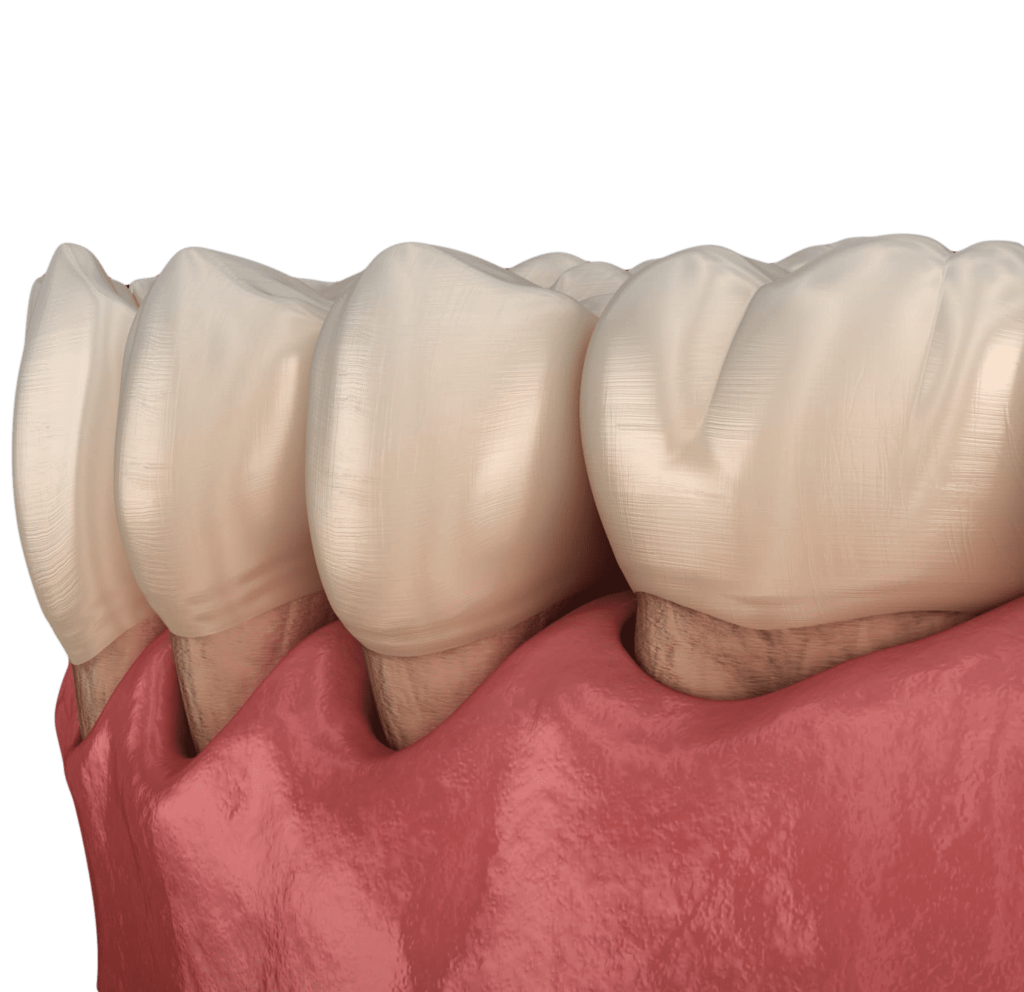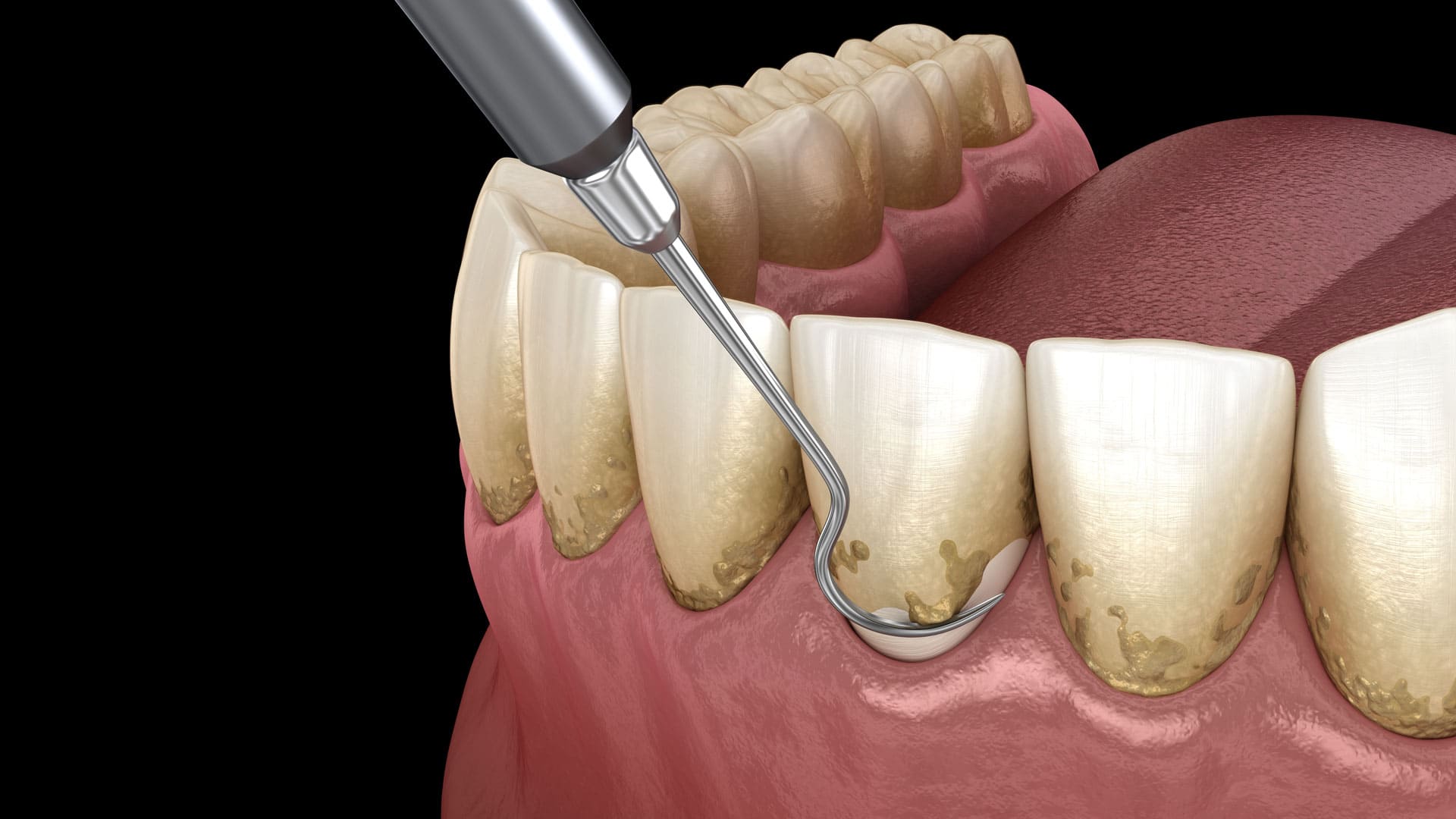Gum Recession Treatments
How to stop gum recession?

Various diseases can develop in the gums due to trauma or infection, and this can jeopardise oral and dental health. While diseases that can be easily treated with minimal procedures are observed in the early stages, advanced treatment methods may be needed in cases where tissue loss increases. Gingival recession is one of the conditions that require advanced methods.
Gingival Recession Treatment Istanbul How is it treated? Prices? What are gingival graft and tissue graft?
What is Gum Recession?
Gingival recession is a condition in which the amount of gum remains below the level required in the region as a result of the destruction of the jawbone and gum tissue due to various factors. With gingival recession, the amount of tissue observed in the mouth of the tooth in the area increases and the tooth appears to grow longer. The new form of gum tissues can make it difficult to maintain routine oral care and can jeopardize the health of the oral tissues. In the later stages of tissue loss, it is also possible to encounter problems such as shaking and displacement of the teeth.
What Causes Gum Recession?
Gum recession is a problem that typically arises from an increase in bacteria in the area due to an inadequate oral care routine.
When bacterial plaque remains unclean in both clinical and home settings for extended periods, it results in significant tissue loss.
The time it takes for gum disease to reach this extent may vary depending on the content of the food consumed, the person’s predisposition to the disease, the frequency of oral care, and the amount of surface area suitable for bacteria to adhere to.
Areas that significantly increase bacterial attachment include incorrectly made or ill-fitting restorations, unpolished restoration surfaces, untreated calculus, and gum pockets.
The following is a list of other factors that speed up the disease’s development:
- Drugs that cause dry mouths or changes in gum tissue.
- Irregular eating habits can lead to inadequate intake of products that are effective in the healing mechanism, such as vitamin C.
- Conditions like diabetes, Crohn’s disease, and rheumatoid arthritis are prevalent.
- There are periods of significant hormonal shifts, including puberty, pregnancy, and menopause.
- Conditions that cause immunosuppression include HIV/AIDS, leukaemia, and cancer treatment.
- Bad habits like smoking, chewing tobacco, or drug use are prevalent.
- Periods of intense stress.
In addition to the bacterial source, gingival recession can also occur as a result of forces and trauma to the tissue. For instance, using hard toothbrushes and applying intense pressure or performing orthodontic treatment with excessive force can cause gum recession over time. Sudden tissue injury to the gum in certain cases can also lead to gum loss in the affected area.

How to Treat Gum Recession?
Treatment for damaged and receding gum tissue requires curing the gum infection. In this scenario, we first remove the plaque that has adhered to the tooth surface through scaling, root surface smoothing, or flap operation. We adjust the oral care routine to ensure effective cleaning, and if necessary, we support the treatment with antibiotics. Once the control sessions have successfully treated the infection, we can plan treatments to support and strengthen the tissue in the gum-lost area. The treatments aim to reduce gum recession, cover the opened root surface, and make the area easier to clean. In this context, we perform free gingival graft application, tissue graft procedure, and tunnel operation.
Gum Grafting Istanbul
A gingival graft procedure is used when there is less keratinised gingiva, which is the tight, thick, and adherent gingival tissue that should be present in healthy gingiva. The purpose of this application is to stop and protect the gingival recession that occurs by removing the lack of adherent gingiva in the relevant area. We apply it by extracting tissue from the superficial layer of the palatal tissue in the patient’s own upper jaw and transferring it to the treatment area. Special thin sutures fix the tissue to the prepared area, completing the treatment.
Tissue Graft Istanbul
The tissue graft procedure is an operation applied to close the gingival recession by adding a tissue called tissue from the upper jaw palate of the person, which has the potential to form a new gum, to the areas where gingival recession is observed. Unlike gum grafting, this treatment involves opening a portion of the palate tissue in an envelope-like fashion. Then, the required amount of tissue is taken from here, and the area is closed with the help of sutures. We place the tissue in the recession-observed area and secure it with special stitches to ensure its stability.


Tunnel Operation (Tunnel Technique) Istanbul
Tunnel operation is a treatment alternative applied when tissue regeneration alternatives do not have a chance of success for various reasons. We apply it to preserve the healthy tissues in the mouth for an extended period and to facilitate easy cleaning of the affected area.
This method exposes part of the root surface, allowing large molars, which bone grafts cannot treat due to surrounding bone destruction, to remain in the mouth for a longer period. Although it does not create an aesthetic result, it has an important place in treatment because it allows the person to use their natural teeth for the longest possible time.
In cases where there is bone loss around one of the roots that cannot be treated in any way, it may also be possible to split the tooth into two, keep the root that can be treated in the mouth, and extract the other root.
Avedent offers you all these treatment methods where experience is important with its expert physician staff. You can easily make an appointment with our clinic and get more detailed information about the gum recession treatment alternatives that can be applied to you.
